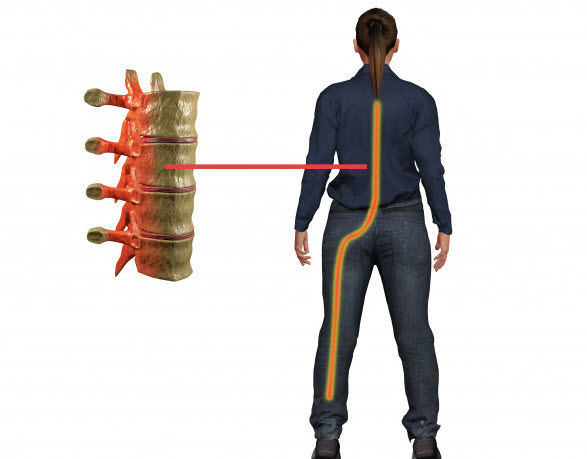The sciatic nerve is the largest nerve in your body, running from your lower back down through your buttocks to your limbs, all the way to your toes. When this nerve is damaged, the resulting discomfort can impact any muscles connecting to it, often creating a pain that travels from your lower back down to your feet. This condition, called sciatica, is not a disease itself but a symptom of an underlying nerve problem.
Some people who experience sciatica may simply find it a minor annoyance that dissipates within a few weeks without treatment. Others, however, find sciatica to be a debilitating condition that requires medical intervention to obtain relief. NYC Spine Surgeon Dr. Fischer at NYU Langone Medical Center in NYC in Manhattan is experienced in treating sciatica and helping patients resume their normal activities with no more pain. What are some of the treatment options if you need help handling sciatica?
Self-care
Your first efforts will likely be self-care at home. Avoid prolonged resting because that can worsen your symptoms. Cold packs for the first couple of days are recommended, followed by hot packs after about three days. Alternating cold and hot may also help. Over-the-counter medications like ibuprofen and naproxen sodium are sometimes beneficial in relieving pain.
Medication
If medications available at your drugstore aren’t sufficient, a qualified physician like NYC Spine Surgeon Dr. Fischer may prescribe stronger drugs for sciatica like muscle relaxants, anti-inflammatories, narcotics, or others.
Steroid injections
Sometimes NYC Spine Surgeon Dr. Fischer recommends an injection of a corticosteroid into the affected area near the nerve root. This can reduce inflammation and therefore lower pain. The benefits of steroid injections usually last a few months at most, but can allow patients to resume their activities for a time. However, doctors limit the number of steroid injections because too many can have negative side effects.
Exercise
When your pain is at a level which allows you to exercise, there are certain movements that may help sciatica symptoms. Stretching and low impact aerobic exercises are ideal. NYC Spine Surgeon Dr. Fischer can recommend specific exercises that would benefit you the most.
Physical therapy
A qualified physical therapist is able to design a regimen to strengthen muscles, improve flexibility, aid posture, and prevent further injuries or discomfort.
Alternative treatments
There are several alternative options for treating sciatica pain. Massage increases circulation and relaxes muscles, often relieving symptoms for a period of time. Acupuncture, when performed by a licensed practitioner, may help some sciatica patients with painful areas. Chiropractic treatment aims to improve spinal movement and lower related discomfort, although it tends to be more effective on lower back pain than radiating pain.
Surgery
When sciatica symptoms are severe and other methods have been unsuccessful, NYC Spine Surgeon Dr. Fischer at NYU Langone Medical Center in NYC may advise surgery. This is especially true when you lose feeling or movement in your limbs, indicating that the sciatic nerve needs urgent repair to avoid permanent injury. NYC Spine Surgeon Dr. Fischer can recommend the best treatment plan for your sciatica so that you can live a pain-free life. Contact our office today to schedule a consultation.
Learn more about sciatica by clicking on the links below:
Sciatica Explained
What is Sciatica Pain And What Are The Causes
All You Must Know About Sciatica Pain
Common Causes of Sciatica
Sciatica and How it Affects Your Body
Exercises and Stretches for Sciatica Pain

